UC Gardening Blogs
It Was a Scorpion Kind of Day at the Bohart Museum of Entomology
Little Logan Loss of Rocklin is only 6 but already he knows more about scorpions than many, if not...
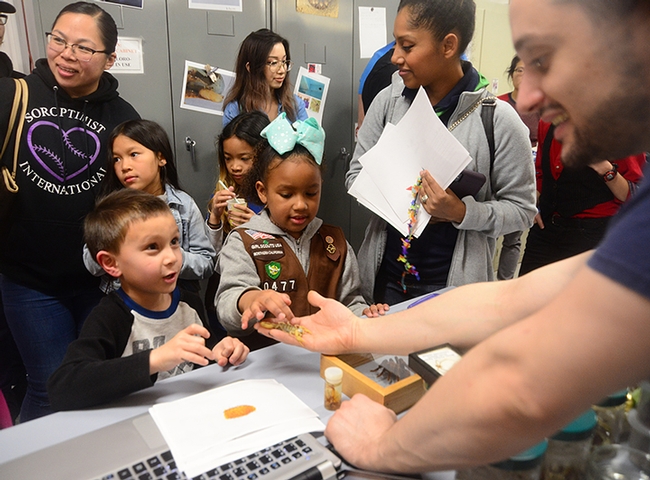
Logan Loss, 6, of Rocklin talks about scorpions to Bohart associate and scorpion scientist Wade Spencer. The kindergarten student is an avid scorpion enthusiast. Also pictured are members of the Vacaville Brownie Girl Scout Troop (from left) Jayda Navarette, Keira Yu and Kendl Macklin, front. (Photo by Kathy Keatley Garvey)
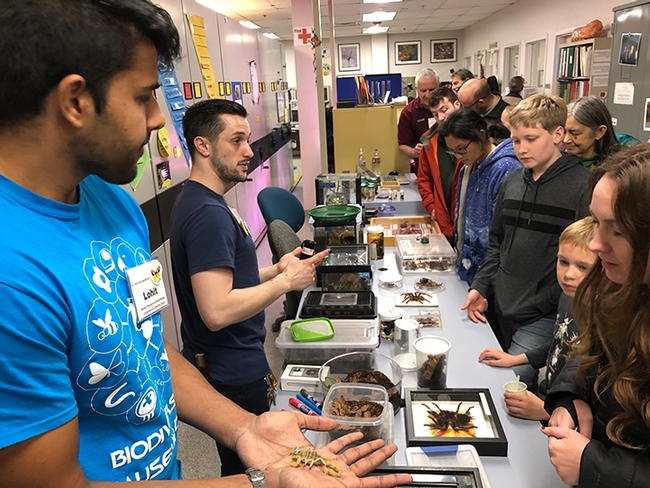
Bohart associates and entomology students Lohit Garikipati show scorpions to the crowd. (Photo by Kathy Keatley Garvey)
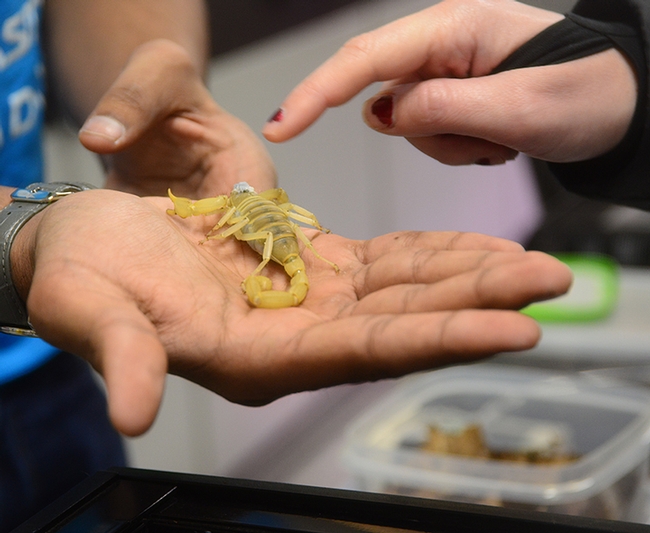
This is Wade Spencer's desert hairy scorpion named Barthlomew. (Photo by Kathy Keatley Garvey)
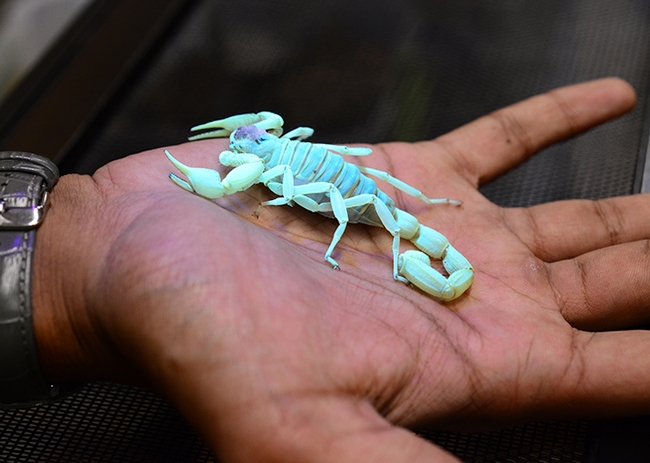
Wade Spencer's desert hairy scorpion named Barthlomew glows under UV light. (Photo by Kathy Keatley Garvey)
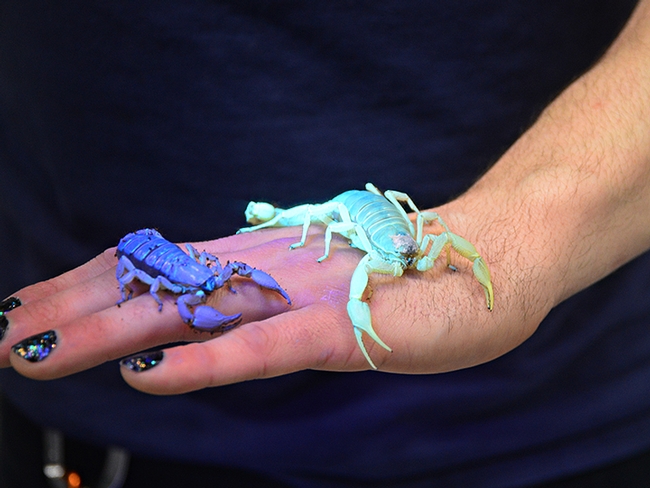
Wade Spencer holds his African burrowing scorpion (left) and desert hairy scorpion under UV light. (Photo by Kathy Keatley Garvey)
Earth Day
April 22 is Earth Day. I started wondering how the event got started and found my answers online at the Library of Congress.
According to the EPA Journal (April, 1980) Senator Gaylord Nelson, a Wisconsin Democrat and environmentalist, planned a peaceful nationwide demonstration on April 22, 1970 to show support for the environmental movement. Demonstrations were common then especially against the war in Vietnam but were not always peaceful. In his own words, Senator Gaylord in the EPA Journal article recalled that “2000 college and universities, 10,000 high schools, several thousand communities and over 20,000,000” people joined together in peaceful support of the environment. As a result, President Nixon, who initially had not expressed much interest in environmental legislation, submitted to Congress the Environmental Protection Agency plan in July 1970. It went into effect on December 2, 1970. The EPA's first director, William Ruckelshaus, a Republican, gathered his staff from more than a dozen federal agencies to create new air and water safety standards and to go after “Big Polluters”.
Within 10 years of its initiation, laws that we take for granted were enacted: the Clean Air Act, the Endangered Species Act, the Safe Drinking Water Act, the Toxic Substances Control Act, the Federal Environmental Pesticide Control Act to name just a few.
Today, let's advocate for the Earth. Here are a few ideas.
Nature Scavenger Hunt – here's one list I found on the internet: http://scavenger-hunt.org/nature-photo-scavenger-hunt-list/
Take a hike, a walk or a jog and pick up some trash along the way (Wear gloves.) In Sweden this is called “plogging”.
Plant a native tree or native plants.
Make “seed balls” from water, seeds and shredded, and recycled paper. Here are the directions: https://buggyandbuddy.com/make-seed-balls-from-recycled-paper/
Walk around your home and garden, check for water leaks and fix them. Water is still precious, even in a season of lots of rain.
Gaylord Nelson said, “Our goal is not just an environment of clean air and water and scenic beauty. The objective is an environment of decency, quality and mutual respect for all other human beings and all other living creatures.” And in the words of Chief Seattle, “The earth does not belong to us. We belong to the earth.”
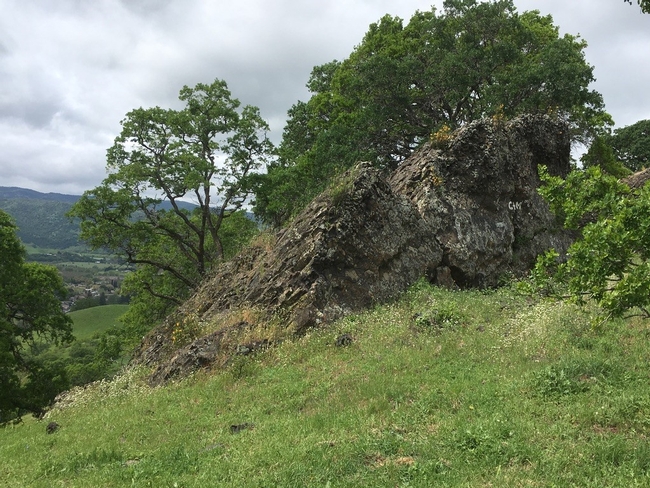
photo by Michelle Davis
Sarah Stellwagen: On the Trail of Spider Glue
Spider glue: it's a sticky subject but there's much more to it than that. "Most people are unaware...
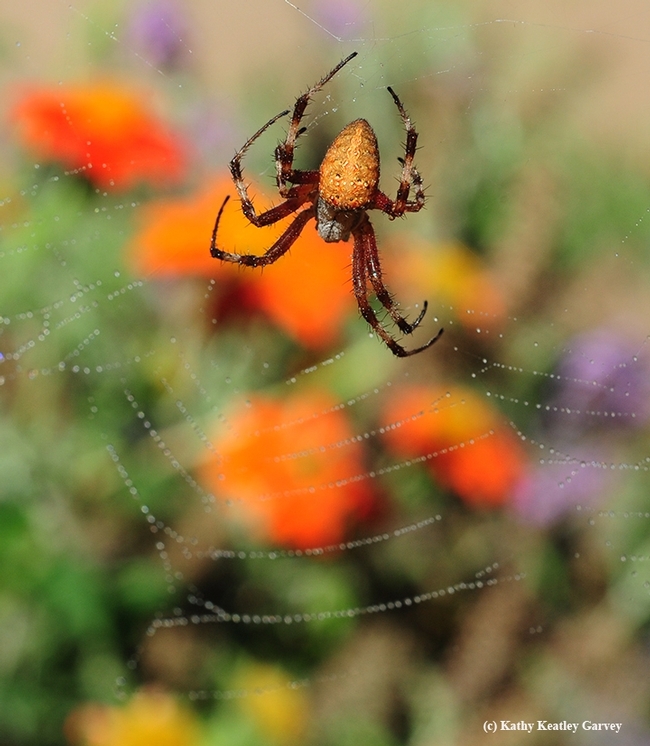
A redfemured spotted orbweaver, Neoscona domiciliorum, photographed in Vacaville, Calif. (Photo by Kathy Keatley Garvey)
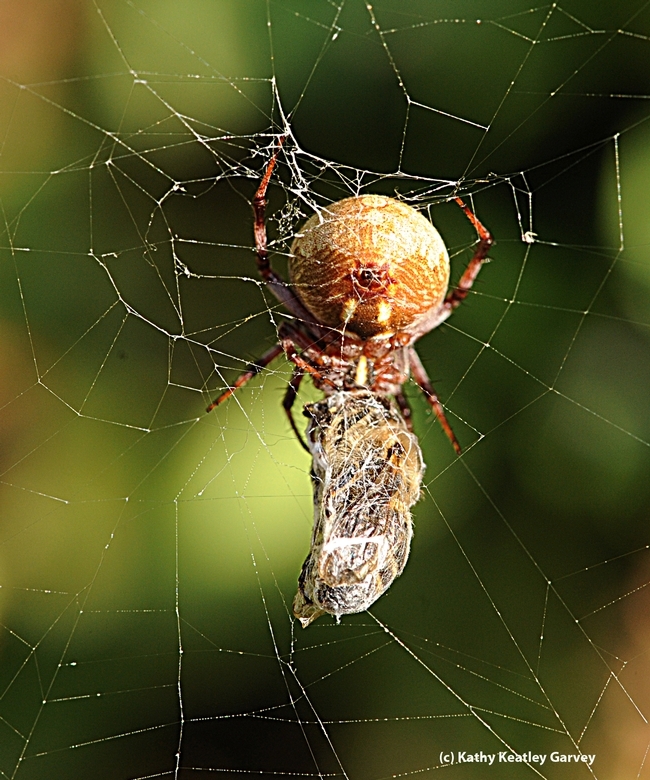
An orbweaving spider wraps its prey, a honey bee. (Photo by Kathy Keatley Garvey)
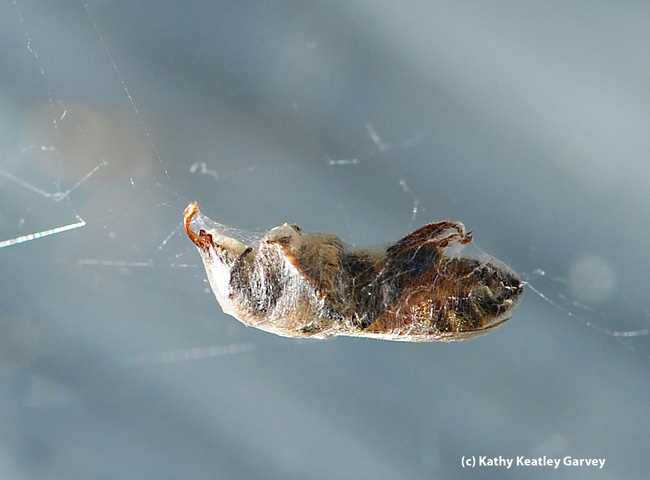
It's a wrap. A honey bee encased in a spider web. (Photo by Kathy Keatley Garvey)
Butterfly Summit: Are Butterflies Heralds of Apocalypse?
"The butterfly counts not months but moments, and has time enough," wrote the late poet...
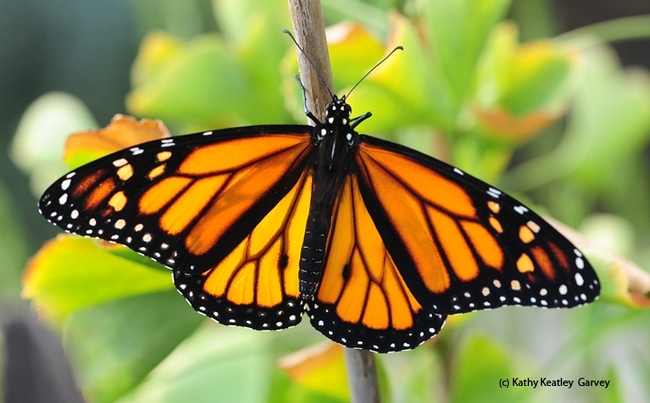
A male monarch seeking nectar in Vacaville, Calif. (Photo by Kathy Keatley Garvey)
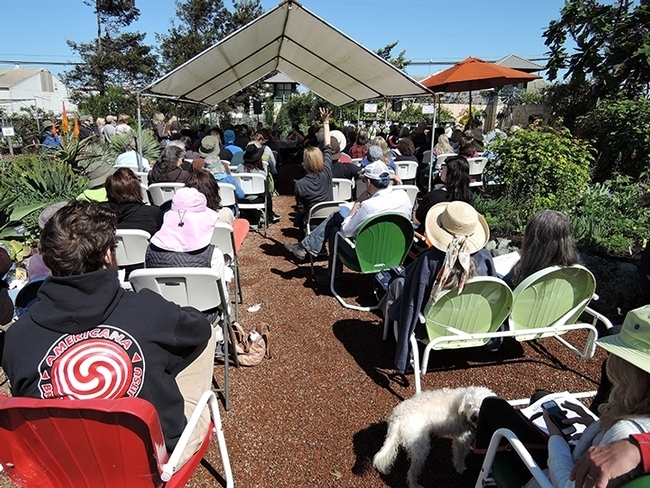
A scene from last year's Butterfly Summit at Annie's Annuals and Perennials. (Photo by Kathy Keatley Garvey)
April Miku
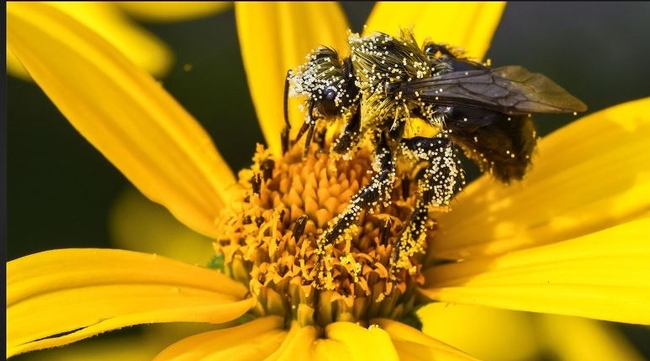
sciencemag.org



